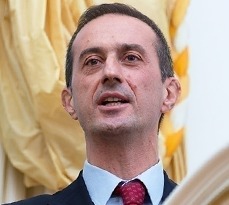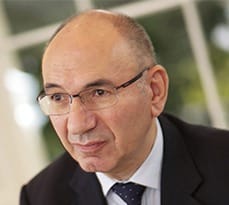Three Cambridge Judge faculty – Lucio Sarno, Raghavenda Rau and Elroy Dimson – are cited in study as among the most prolific authors of papers in top finance journals.
Three members of the Finance subject group faculty at Cambridge Judge Business School – Professors Lucio Sarno, Raghavendra Rau and Elroy Dimson – are named in a study as among the most prolific authors in top finance journals during the 75 years from 1946 through 2020.
The study looks at the number of articles published in the top 4 and top 10 journals in the field in concluding that the distribution of authors in top finance journals is “virtually identical” to the well-known Yule-Simon rule of distribution probability.
Publication in a top journal is likely to lead to more of the same
“The probability that a newly accepted paper in a given journal is written by authors with no prior publications is lower for top journals” as well as specialty journals and “impactful” journals, says the study posted on the SSRN open-access site.
The paper cites by name authors with at least 9 publications in the top 4 journals and 13 publications in the top 10 journals during the 75-year study period.
They include the following members of Cambridge Judge faculty:
- Lucio Sarno, Professor of Finance, with 13 papers in the top 4 journals and 21 in the top 10 journals
- Raghavendra Rau, Sir Evelyn de Rothschild Professor of Finance, with 10 papers in the top 4 journals and 18 papers in the top 10
- Elroy Dimson, Chairman of the Centre for Endowment Asset Management at Cambridge Judge, with 10 papers in the top 4 journals and 14 papers in the top 10.
The difficulty of achieving many publications in top-flight journals was highlighted in an earlier study that included a focus on 5 “elite” journals – which found that within a study set of 15,868 authors who had published in a list of 23 prestigious finance journals between 1970 and 2009, only 5.6% had written 5 or more articles in the elite 5 journals and fewer than 2% had 10 or more appearances.
The top 4 finance journals
The top 4 journals for the purpose of the new study are:
- Journal of Finance
- Journal of Financial Economics
- Review of Financial Studies
- Journal of Financial and Quantitative Analysis
The top 10 finance journals
The top 10 journals cited by the study are:
- Journal of Finance
- Journal of Financial Economics
- Review of Financial Studies
- Journal of Financial and Quantitative Analysis
- Review of Finance
- Journal of Corporate Finance
- Journal of Banking and Finance
- Journal of Financial Intermediation
- Financial Management
- Journal of Financial Markets
The study – entitled “Conservatism and Representativeness Heuristic in Peer Reviews: Evidence from the Finance Literature 1946-2020” – is co-authored by Kee H. Chung of State University of New York (SUNY) at Buffalo and Choonsik of the University of Rhode Island.
Among studies authored by the 3 Cambridge Judge faculty members in the top four journals, here are brief summaries of one article by Lucio Sarno, Raghavendra Rau and Elroy Dimson during the study period:
Professor Lucio Sarno

“Information Flows in Foreign Exchange Markets: Dissecting Customer Currency Trades”
Journal of Finance
The study examined order flows in the foreign-exchange market, drawing on a broad data set of currencies and customer segments of FX end-users.
“The results suggest that order flows are highly informative about future exchange rates and provide significant economic value. We also find that different customer groups can share risk with each other effectively through the intermediation of a large dealer, and differ markedly in their predictive ability, trading styles, and risk exposure.”
Professor Raghavenda Rau

“What Doesn’t Kill You Will Only Make You More Risk-Loving: Early-Life Disasters and CEO Behavior”
Journal of Finance
The study showed a link between the intensity of CEOs’ early-life exposure to fatal disasters and corporate risk-taking, which has economic consequences on firm riskiness and cost of capital.
“CEOs who experience fatal disasters without extremely negative consequences lead firms that behave more aggressively, whereas CEOs who witness the extreme downside of disasters behave more conservatively,” the study found.
Professor Elroy Dimson

“The Price of Wine”
Journal of Financial Economics
The study examined the impact of aging on wine prices and long-term investment performance of fine wines, based on historical price records for Bordeaux Premiers Crus.
“Young maturing wines from high-quality vintages provide the highest financial returns,” the study found. “We estimate a real financial return to wine investment (net of storage costs) of 4.1%, which exceeds bonds, art, and stamps.”


